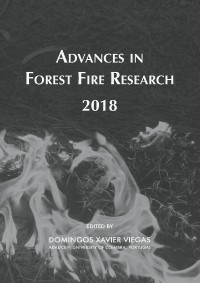Please use this identifier to cite or link to this item:
https://hdl.handle.net/10316.2/44700| DC Field | Value | Language |
|---|---|---|
| dc.contributor.author | Hu, Yuqi | |
| dc.contributor.author | Christensen, Eirik | |
| dc.contributor.author | Rein, Guillermo | |
| dc.date.accessioned | 2018-11-11T15:06:16Z | |
| dc.date.accessioned | 2020-09-06T17:31:05Z | - |
| dc.date.available | 2018-11-11T15:06:16Z | |
| dc.date.available | 2020-09-06T17:31:05Z | - |
| dc.date.issued | 2018 | - |
| dc.identifier.isbn | 978-989-26-16-506 (PDF) | |
| dc.identifier.uri | https://hdl.handle.net/10316.2/44700 | - |
| dc.description.abstract | Smouldering peat fires, the largest fires on Earth in terms of fuel consumed per unit surface, contribute a large fraction of greenhouse gas emissions to the atmosphere on an annual basis and are responsible for regional haze episodes. Haze induces severe air quality deterioration, vast economic losses and poses a threat to health of local communities. Emissions from smouldering peat fire have become an international concern, however, knowledge on this topic is poor. Remote sensing detection technologies developed from studies of flaming combustion become ineffective when applied to smouldering peat fires. This work investigates the transient emissions from smouldering peat fire through small-scale laboratory experiments. Oven dried moss peat sample was burned in an open-top horizontal reactor open-top reactor with a dimension of 20 cm by 20 cm in cross section and 10 cm in depth. The mass loss rate (MLR), the evolutions of mass flux and emission factors (EFs) of the most prominent carbon species (CO2, CO and CH4) were measured. Three combustion stages identifying from the two MLR peaks were used to describe the varying combustion dynamics as the fire progresses. CO2 and CO are mainly emitted from char oxidation and present a similar emission evolution, whose mass fluxes peaked at the same time with the 2nd MLR peak (~120 min). Transient EFs of these two species increase monotonically as the proportion of char being oxidised increases throughout the experiments. In contrast, CH4 is mainly emitted from peat pyrolyis and it shows a different emission behaviour: both its mass flux and EFs peaked at the same time as the 1st MLR peak (~30 min), a time when intensified pyrolysis ends. This study helps understand the link between the smouldering peat combustion dynamics and the transient emissions. Recognising the different emission mechanisms among gas species can be useful in developing effective remote sensing and smouldering peat fire mitigation strategies to tackle this global challenge. | eng |
| dc.language.iso | eng | - |
| dc.publisher | Imprensa da Universidade de Coimbra | por |
| dc.relation.ispartof | http://hdl.handle.net/10316.2/44517 | por |
| dc.rights | open access | - |
| dc.subject | remote sensing | eng |
| dc.subject | wildfire | eng |
| dc.subject | smouldering combustion | eng |
| dc.subject | in-depth burning | eng |
| dc.subject | transient emission | eng |
| dc.title | Laboratory measurement of transient carbon emissions from controlled smouldering peat fire | por |
| dc.type | bookPart | por |
| uc.publication.firstPage | 1376 | - |
| uc.publication.lastPage | 1378 | - |
| uc.publication.location | Coimbra | por |
| dc.identifier.doi | 10.14195/978-989-26-16-506_183 | - |
| uc.publication.section | Chapter 7 - Short Contributions | por |
| uc.publication.digCollection | PB | por |
| uc.publication.orderno | 183 | - |
| uc.publication.area | Ciências da Engenharia e Tecnologias | por |
| uc.publication.bookTitle | Advances in forest fire research 2018 | - |
| uc.publication.manifest | https://dl.uc.pt/json/iiif/10316.2/44700/203959/manifest?manifest=/json/iiif/10316.2/44700/203959/manifest | - |
| uc.publication.thumbnail | https://dl.uc.pt/retrieve/11056745 | - |
| uc.publication.parentItemId | 55072 | - |
| uc.itemId | 68784 | - |
| item.grantfulltext | open | - |
| item.fulltext | With Fulltext | - |
| Appears in Collections: | Advances in forest fire research 2018 | |
Files in This Item:
| File | Description | Size | Format | |
|---|---|---|---|---|
| laboratory_measurement_of_transient_carbon_emissions.pdf | 660.75 kB | Adobe PDF |  |
Items in DSpace are protected by copyright, with all rights reserved, unless otherwise indicated.
